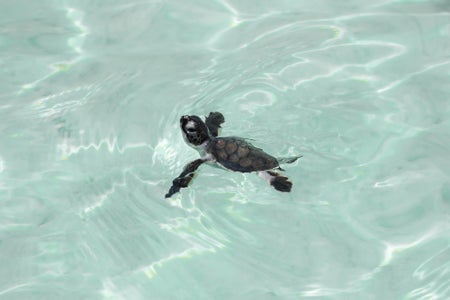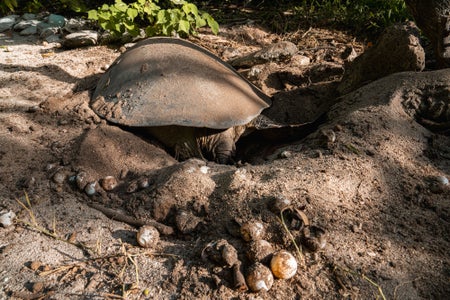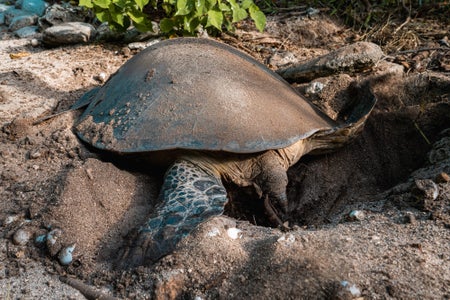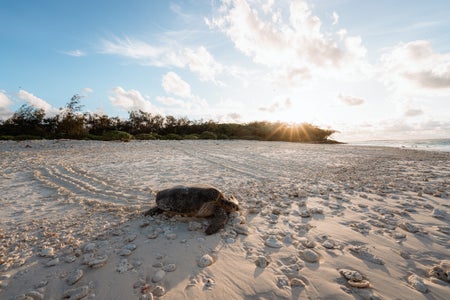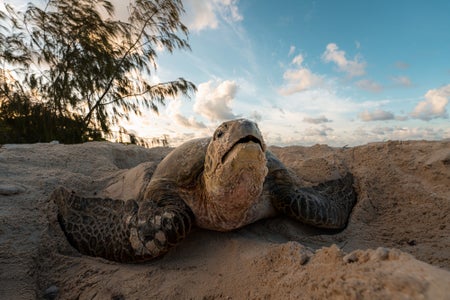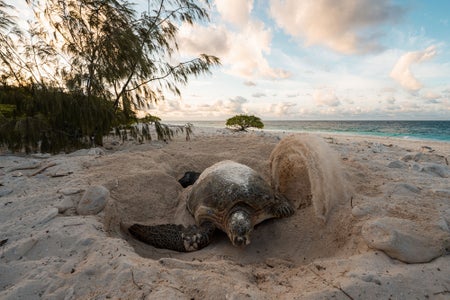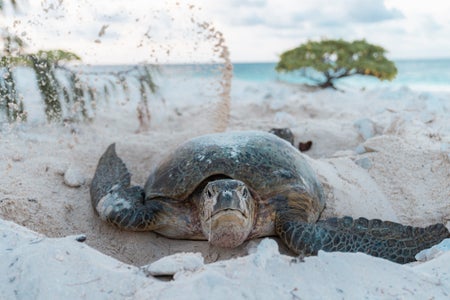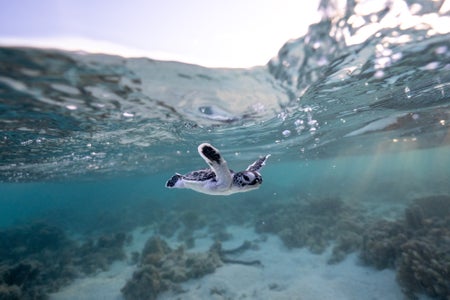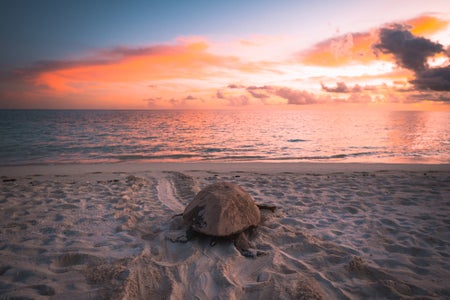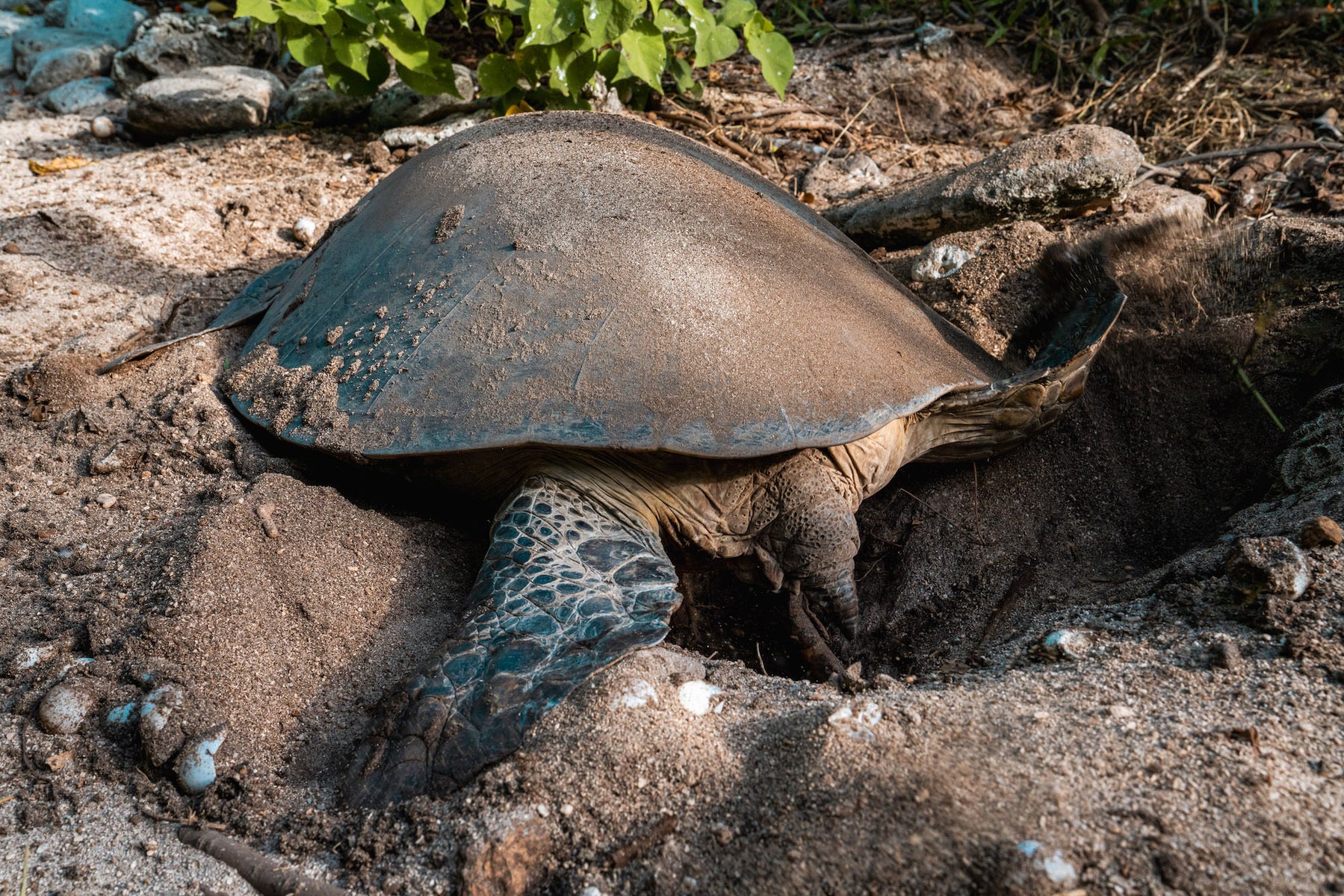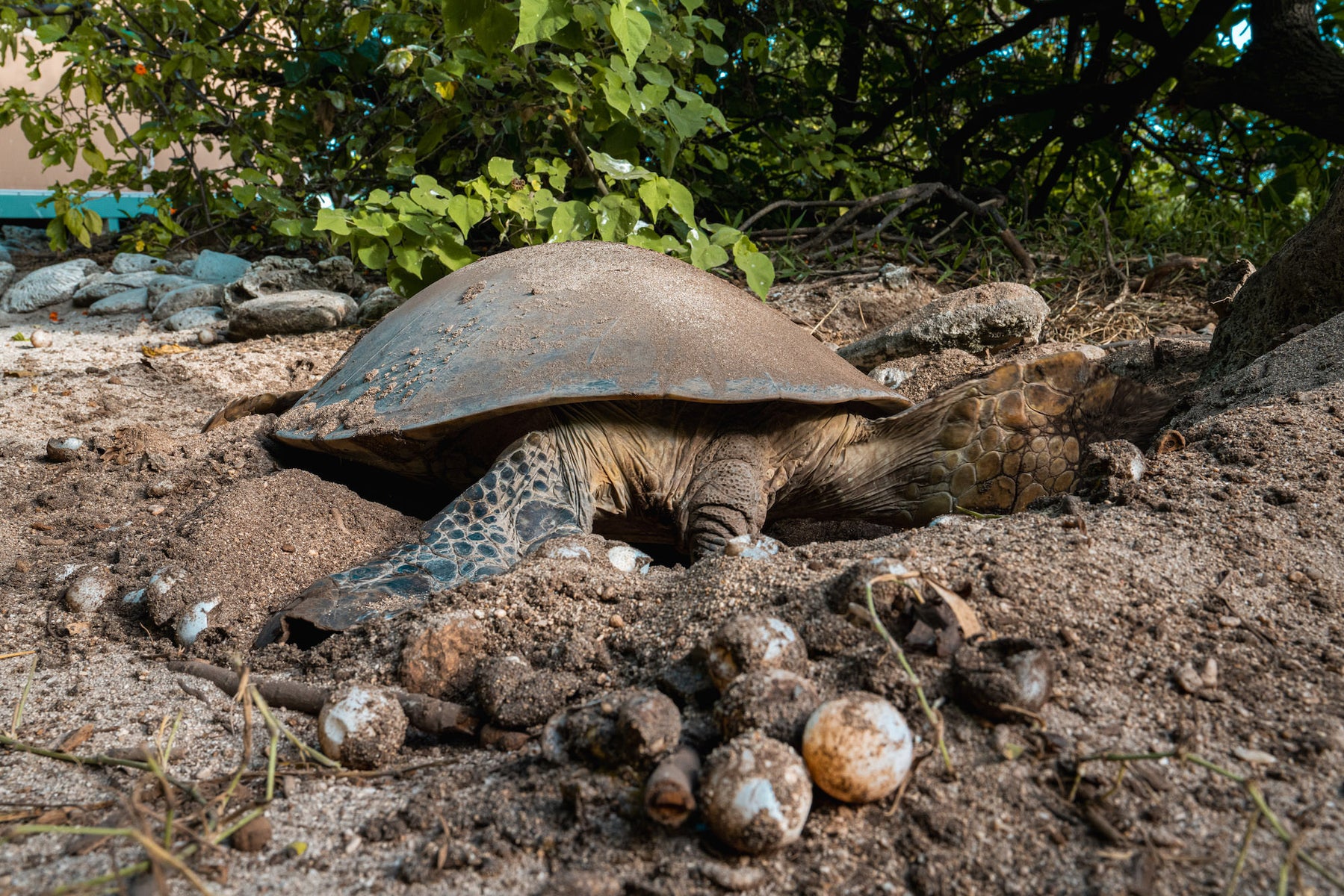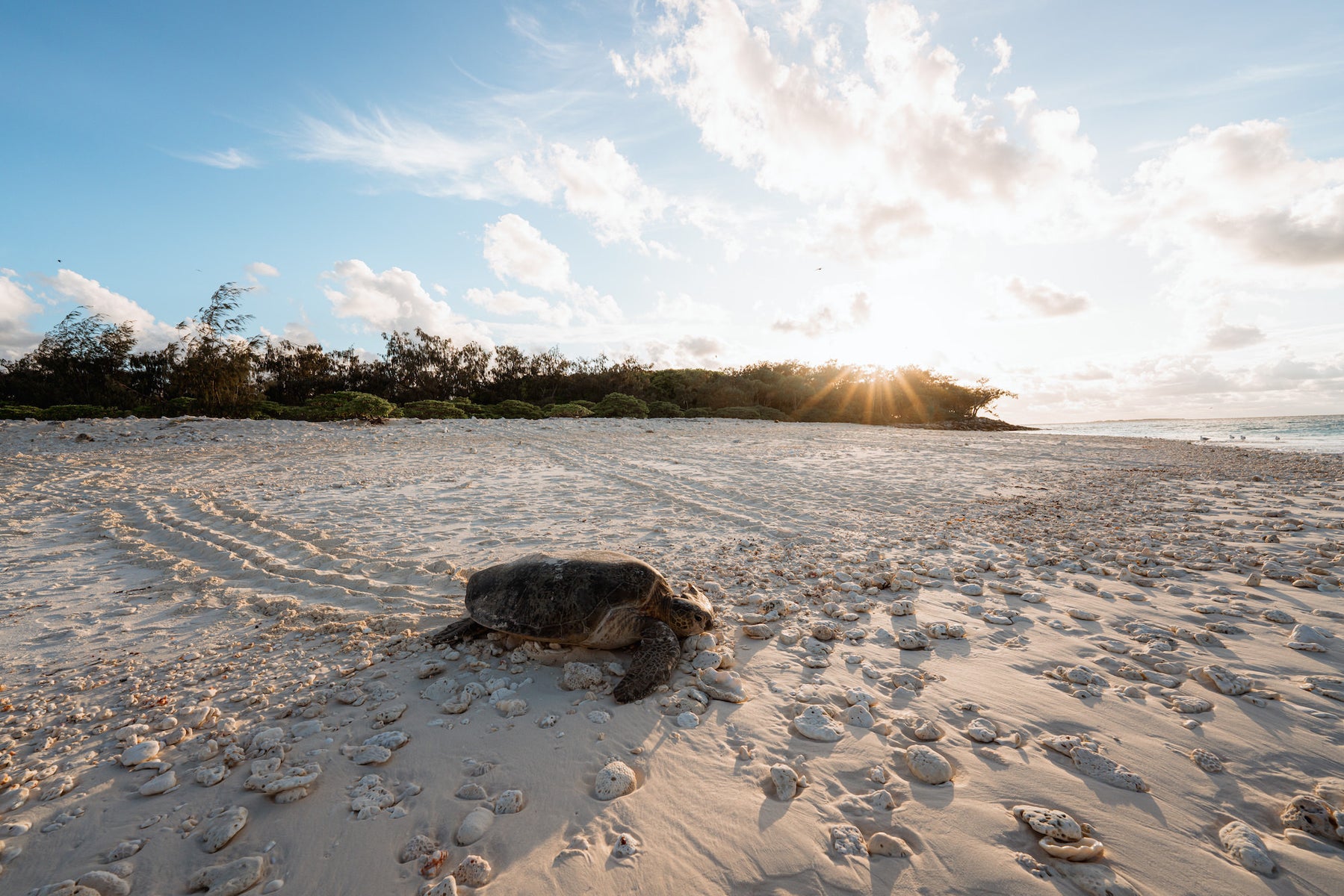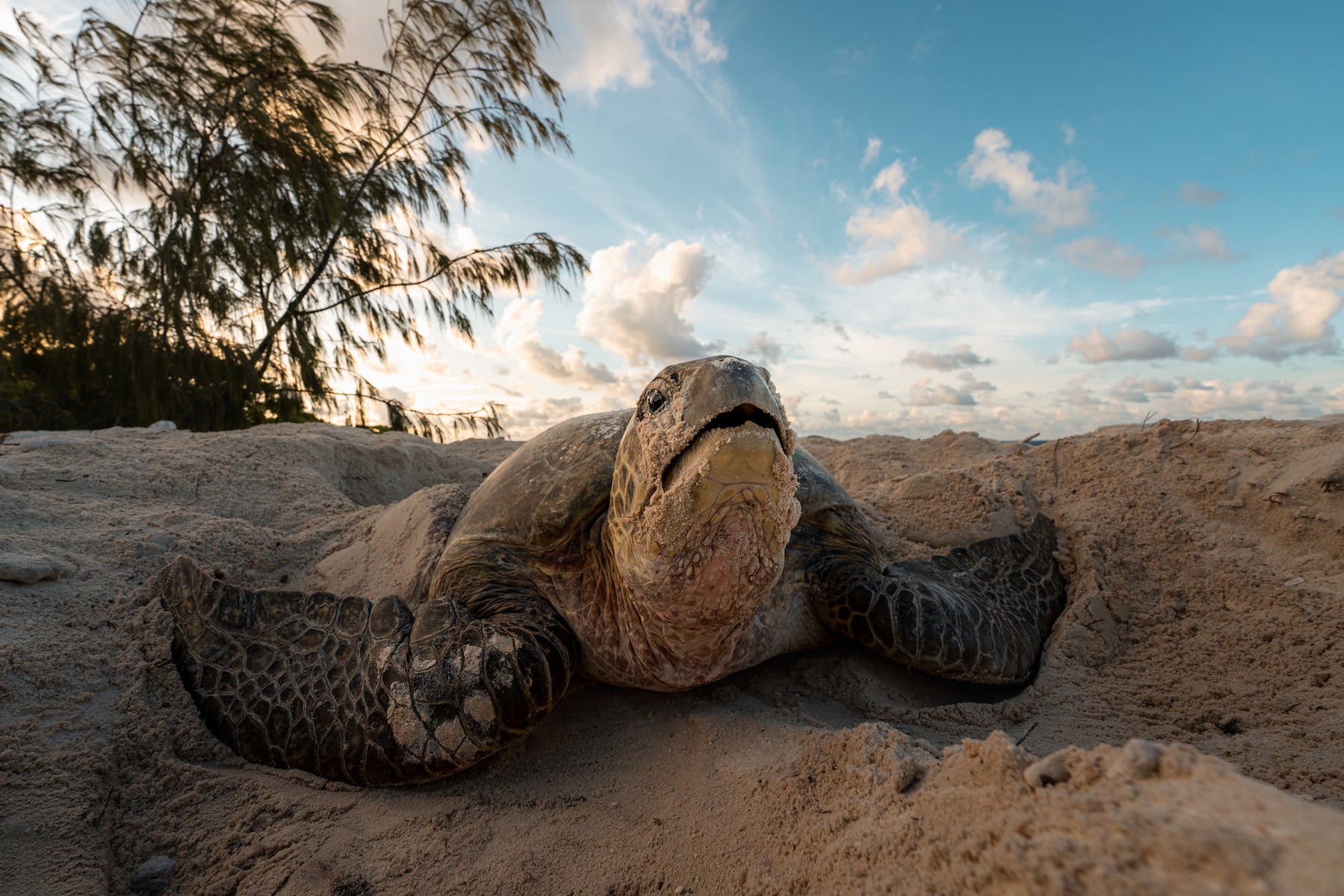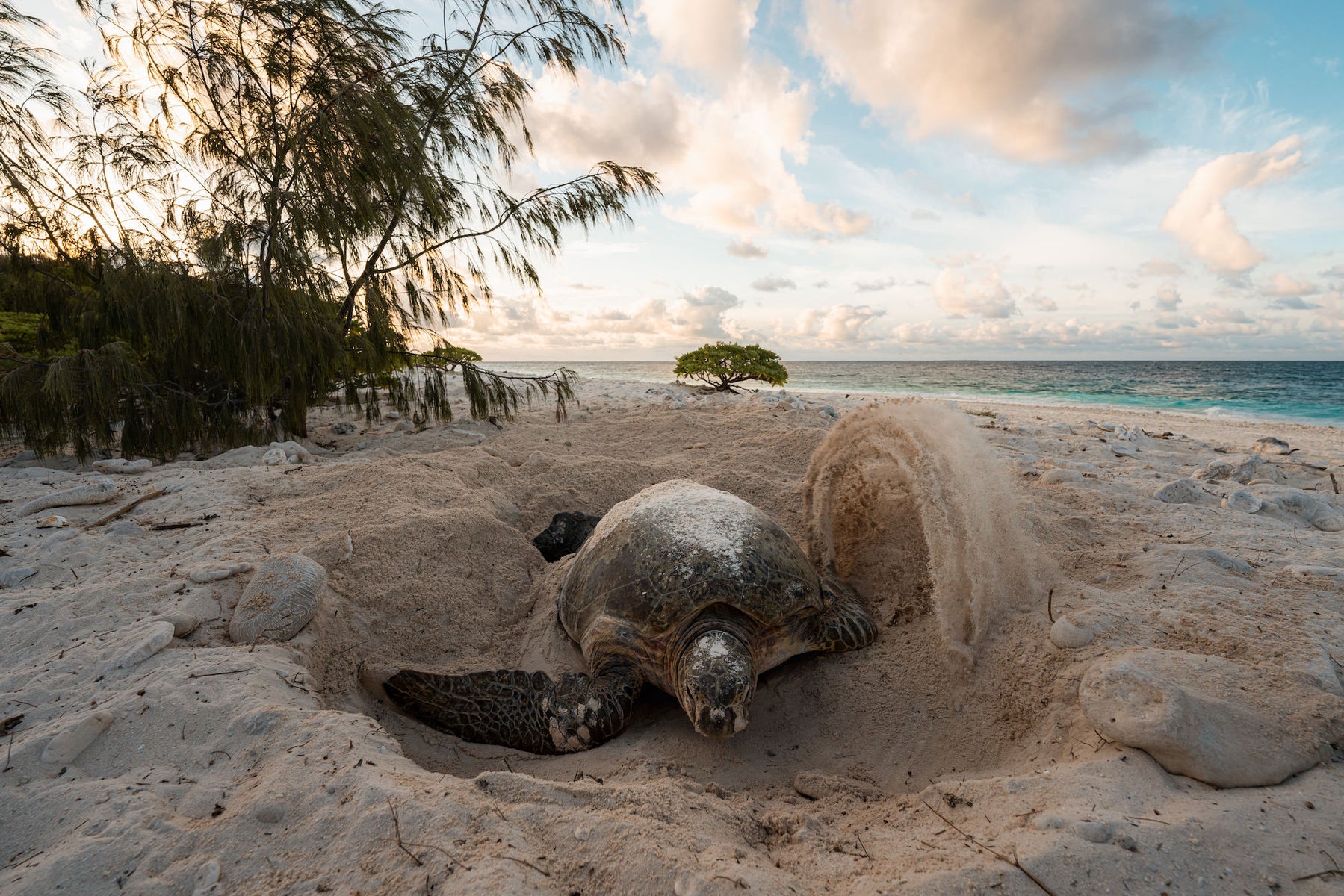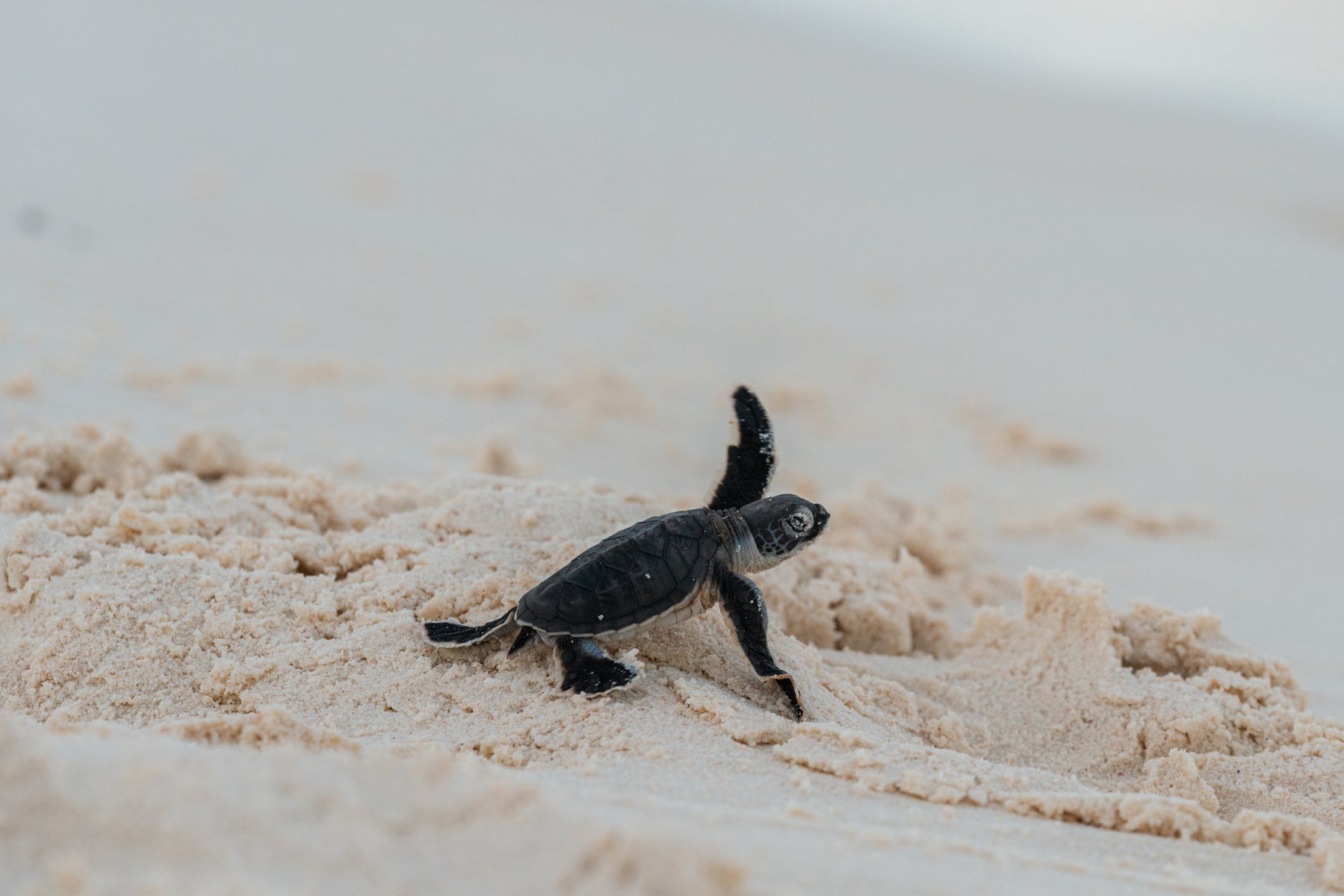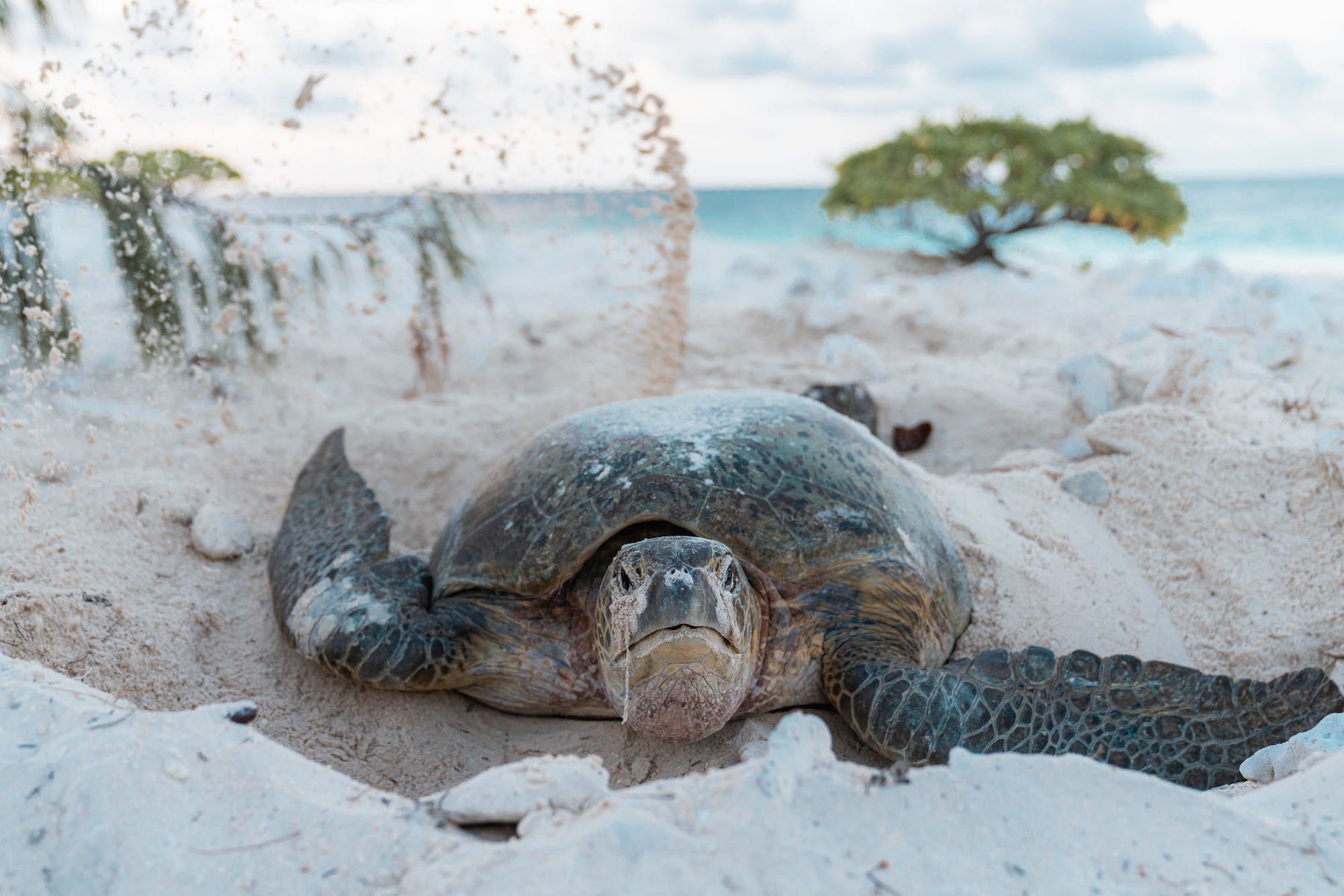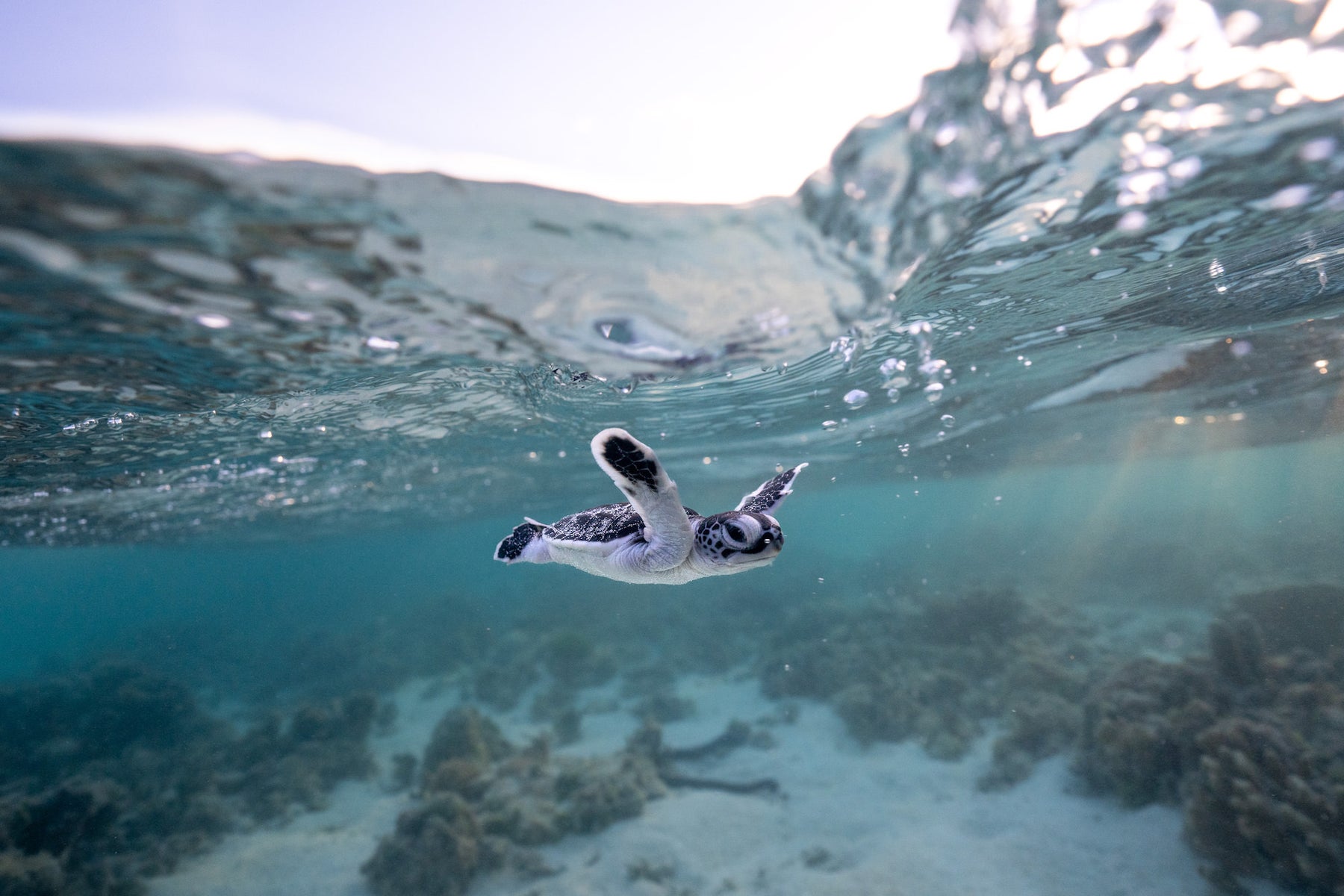When Ocean Geographic announced the photographers and images honored in their Ocean Photographer of the Year Contest, among the images highlighted as finalists in the Conservation (Hope) Photographer of the Year Category is this image, made by Ross Long (@rosslongphoto), an ocean, adventure and lifestyle photographer based in Byron Bay Australia. The photo, made with a Sony Alpha 7R III and Sony 70-200mm f/4 G, is described by Long as such: “In a remarkable and rarely-witnessed moment, a freshly hatched green turtle hatchling races past its fully grown counterpart on the journey to the ocean. This captivating image serves as a poignant metaphor for the monumental challenges that lie ahead for the young hatchling in its quest to reach adulthood.”
Product Preview – In This Article You'll Find:
–Sony Alpha 7R III
–Sony 70-200mm f/4 G
Ross beautifully captures the story of the hatchlings journey in a single frame. From the composition to the settings, this image deserves the honor it is receiving. We sat down with Ross to learn the story behind the shot. Continue reading to learn how Ross made the image titled, ‘Following the Tracks of an Elder,’ in his words.
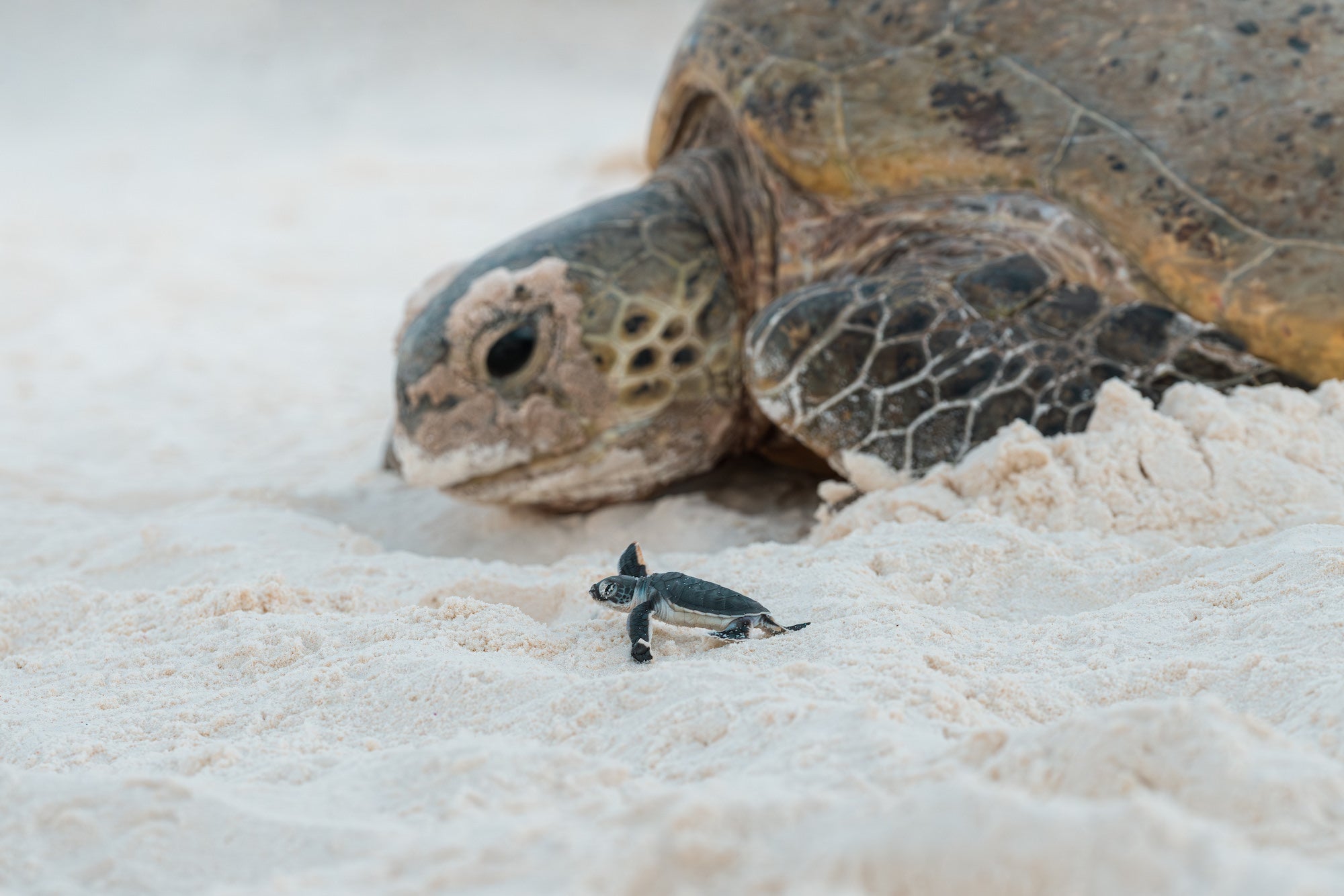
Photo by Ross Long. Sony Alpha 7R III. Sony 70-200mm f/4 G. 1/500-sec., f/7.1, ISO 800
From Accounting To Photography
I grew up in the South West of England in a small coastal town called Sennen Cove, Cornwall. The ocean has had a big hold on me throughout my life. I didn’t know how deep this hold was until I moved from Cornwall to London to pursue a corporate career in finance. After six years in the rat race, I felt disconnected and the pull of the ocean drew me back, but this time it was not to the Atlantic Ocean but to the Pacific Ocean. I moved to Australia in 2016 and over that duration I have gone from full-time accountant to full-time photographer and ocean conservationist.
A Fight For Survival
This image ‘Following the Tracks of an Elder’ was captured on Wilson Island on the Southern Great Barrier Reef. I was on assignment with Queensland Tourism capturing images for a tourism campaign that would encourage people to visit the island. This campaign took place in January which is right in the middle of the green turtle hatchling and nesting season. Green turtles will make their way up the beach during the night when it is high tide. On this particular morning, high tide was quite late in the night so the chances of finding adult green turtles nesting in the morning was quite high because the nesting process takes a couple of hours.
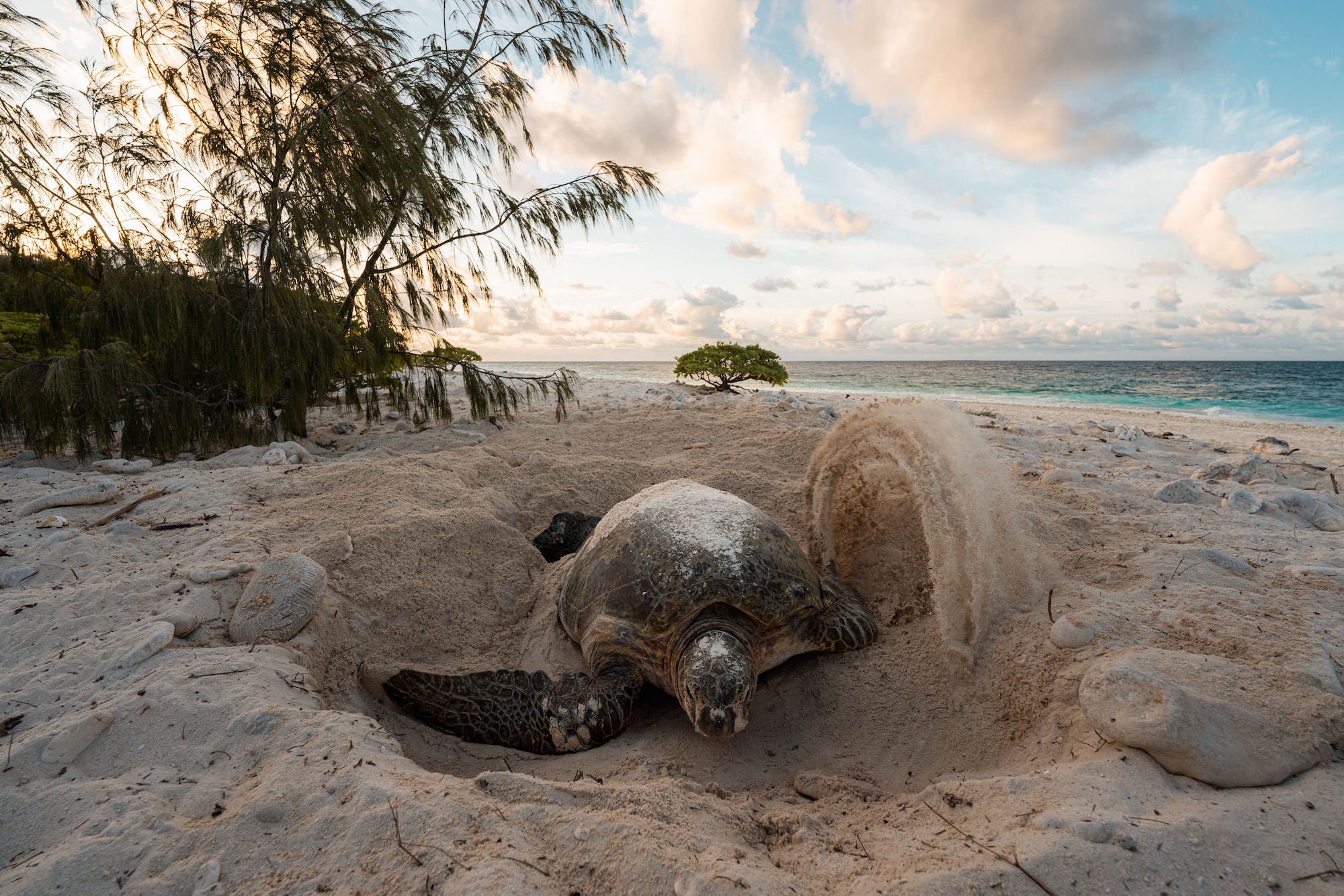
Photo by Ross Long. Sony Alpha 7R III. Sony 14mm f/1.8 G Master. 1/400-sec., f/7.1, ISO 320
To nest as a green sea turtle is quite the ordeal. They drag their heavy bodies over dead coral as they make their way up the beach towards the sand dunes. Once they reach a suitable location, they will look for an ideal nesting ground and then use their flippers to dig a body pit and a chamber to lay their eggs. Unfortunately, space is limited on the island and there is high demand. This means that one adult green turtle’s nest is another green turtle’s graveyard. The turtles will often dig up other turtles’ nests as they lay their own. This will either result in damaging the eggs or digging them up where predators will then take them. In some lucky instances a nest will have had long enough to incubate and the disruption by a nesting adult will cause them to leave the nest and make their way to the ocean. This is what I believe happened here.
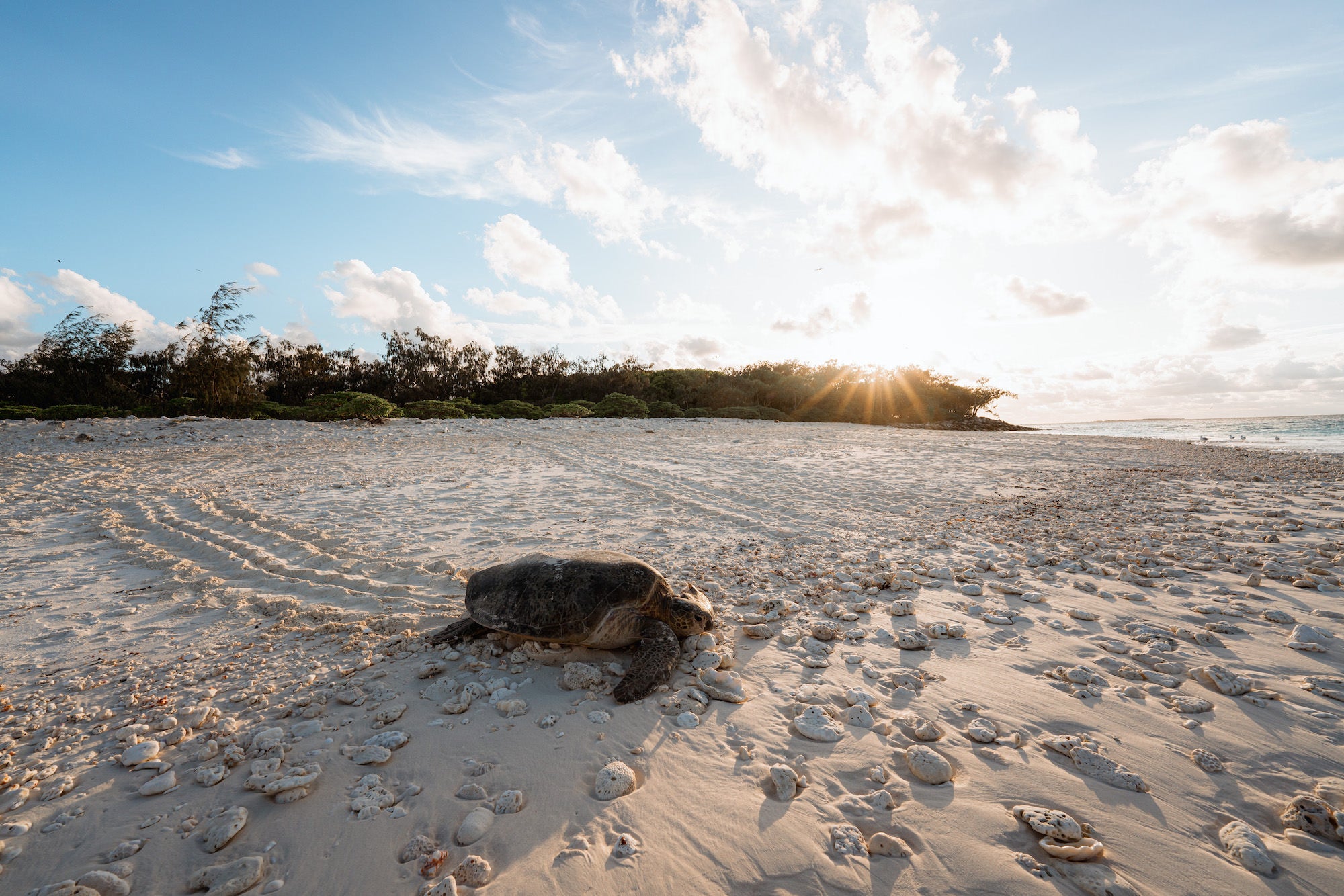
Photo by Ross Long. Sony Alpha 7R III. Sony 14mm f/1.8 G Master. 1/400-sec., f/9, ISO 200
An Odds-Defying Moment
This particular adult green turtle had finished laying her nest and was making her way to the ocean when a single green turtle hatchling emerged from its nest and made its way down the beach. I could see that the hatchling was heading in the same direction as the adult green turtle and I quickly adjusted my settings and waited in the perfect position for the hatchling to pass. When the hatchling caught up with the adult, I carefully waited for the right moment and made sure my focus was locked on to the hatchling and then fired off a burst of shots. What I love about this image is that it embodies nature's beauty and the triumph of life's journey. It is one of a kind. I love the juxtaposition between the sizes of the hatching and the adult. It demonstrates the long journey that awaits the hatchling to reach maturity and also the growth it will experience over its journey. It is a testament of resilience and the 1 in 1000 chance of making it from hatchling to adult.

Photo by Ross Long. Sony Alpha 7R III. Sony 70-200mm f/4 G. 1/500-sec., f/7.1, ISO 800
I never imagined that this shot was a possibility. I had thought once before what are the odds of something like this happening, but generally hatchlings appear from their nest in the evenings and during the night as the sand cools down and adults often come to shore to nest during the night and return back to the ocean at dawn, therefore it is not a common instance to have an adult and hatchling together.
Selecting Gear & Dialing In Settings
I captured this image using the Sony Alpha 7R III and my Sony 70-200mm f/4 G lens. I had two cameras with me that morning. This and the Sony Alpha 7 III with a Sony 24-70mm f/2.8 G Master. I chose to use the Sony Alpha 7R III because I knew that with the higher megapixels, it would allow me to crop the image if I needed too. That was not the case as fortunately I had the Sony 70-200mm f/4 G attached which had enough reach to really focus on the hatching. The Sony 70-200mm f/4 G was also the perfect choice of lens because I could not go any lower than f/4 and that ensured that the adult turtle was blurred only slightly so you can still make out its details but your eyes are not fully drawn to it. If I had my 70-200mm f/2.8 GM attached, I would have lowered my aperture rather than increased my ISO and I do not think that the adult turtle would be as detailed as it is.
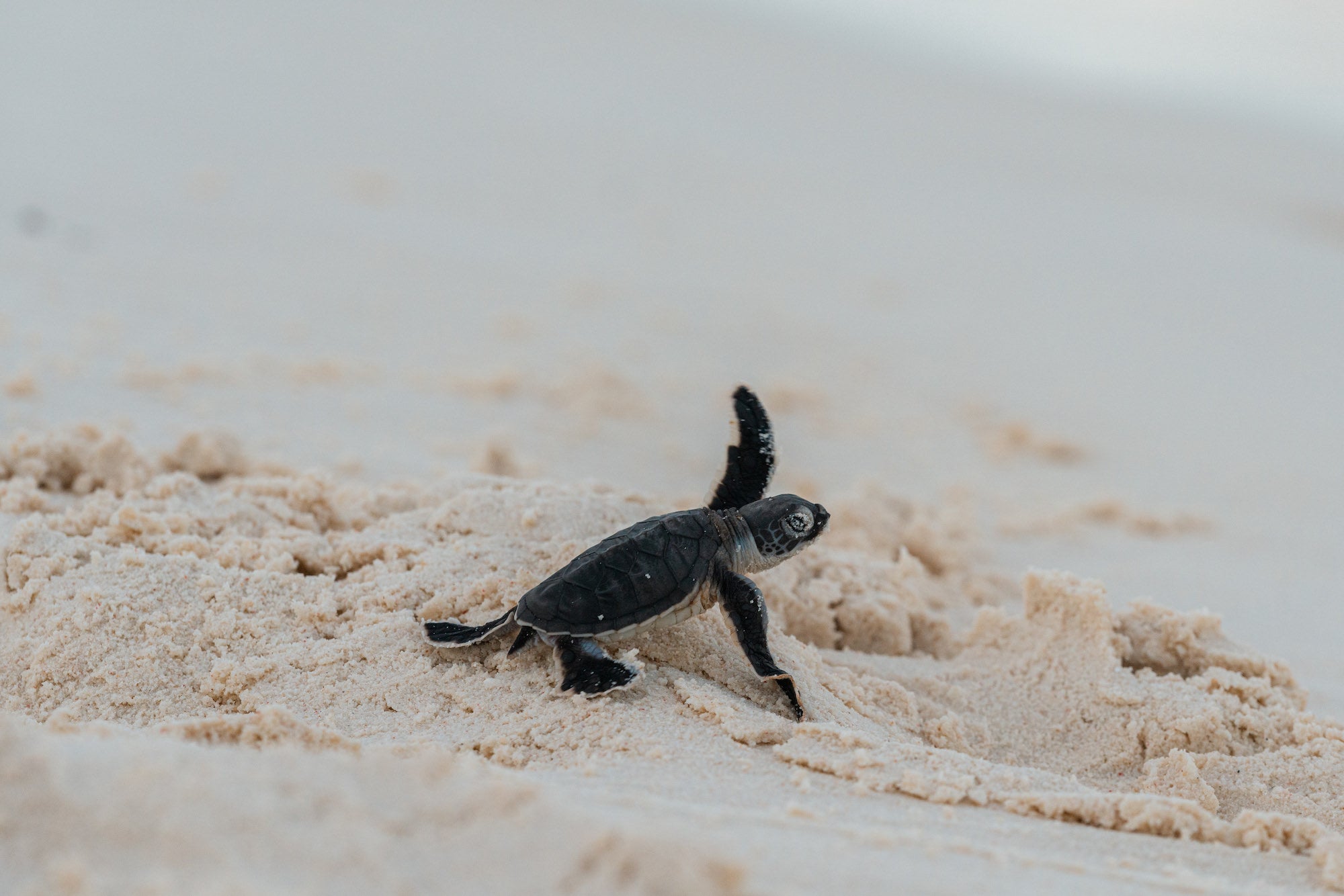
Photo by Ross Long. Sony Alpha 7R III. Sony 70-200mm f/4 G. 1/640-sec., f/7.1, ISO 800
I used the following settings to capture the image: 1/500-sec., f/7.1, ISO 800. The most important element of this photo was nailing the focus and making sure that it was on the hatchling and not the adult turtle or the sand in the foreground. I used the Flexible Spot: L focus area and lock on auto-focus so that it wouldn’t lose focus as the hatchling was moving. Turtle hatchlings are very small, the size of the palm of your hand and move very quickly. It was important to keep focus on the hatchling as it is moving at speed. In addition to focus, the shutter speed was also a crucial setting and needed to be fast enough to freeze the hatchlings' flippers. It was also important for me to get down low so as to give the perspective of how small the turtle hatchling was against the adult.
Light Editing For A Documentary Style
I edited this photo in Adobe Lightroom. I wanted to maintain a documentary style image so I was very light on the editing. Capturing the story was the most important aspect of this image so editing was not an essential part of the process. I made sure to capture the picture as perfectly in camera as possible so that I would not need to do too much editing in post. I made basic corrections to the levels and minor color corrections to reduce the yellow hues and bring out the brightness of the image. I wanted the sand brighter as a way to show hope for the hatchling as this image reflects a moment of hope and its 1/1000 chance of survival.
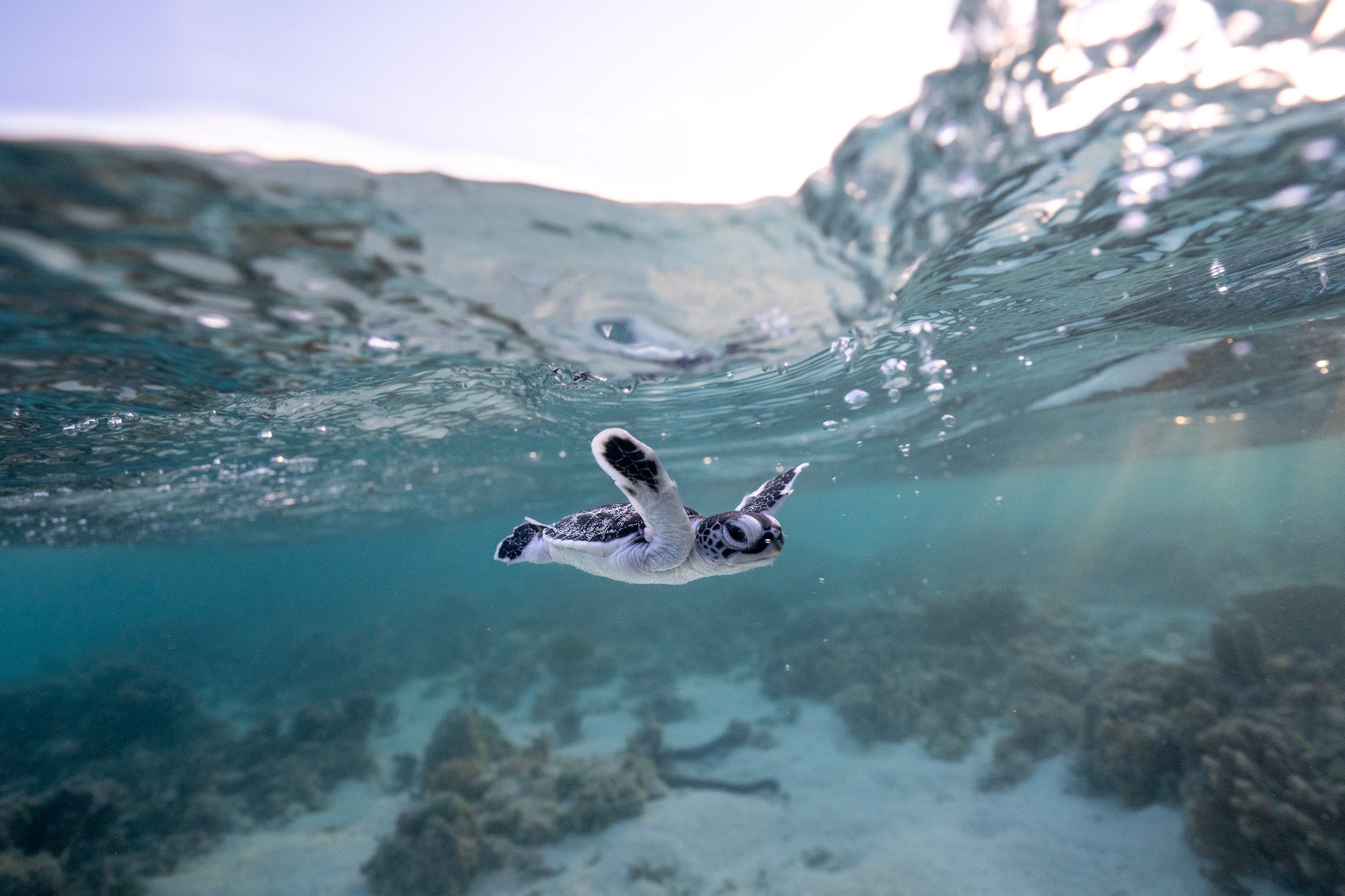
Photo by Ross Long. Sony Alpha 7 III. Sony 16-35mm f/2.8 G Master 1/640-sec., f/8, ISO 1250
See more of Ross Long’s work on Instagram @rosslongphoto.
